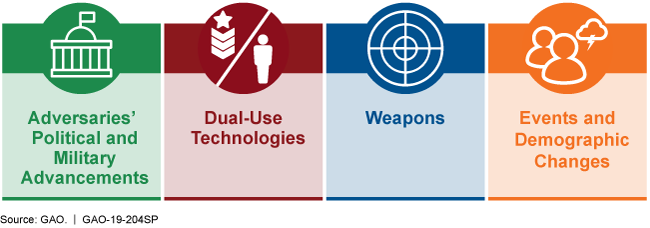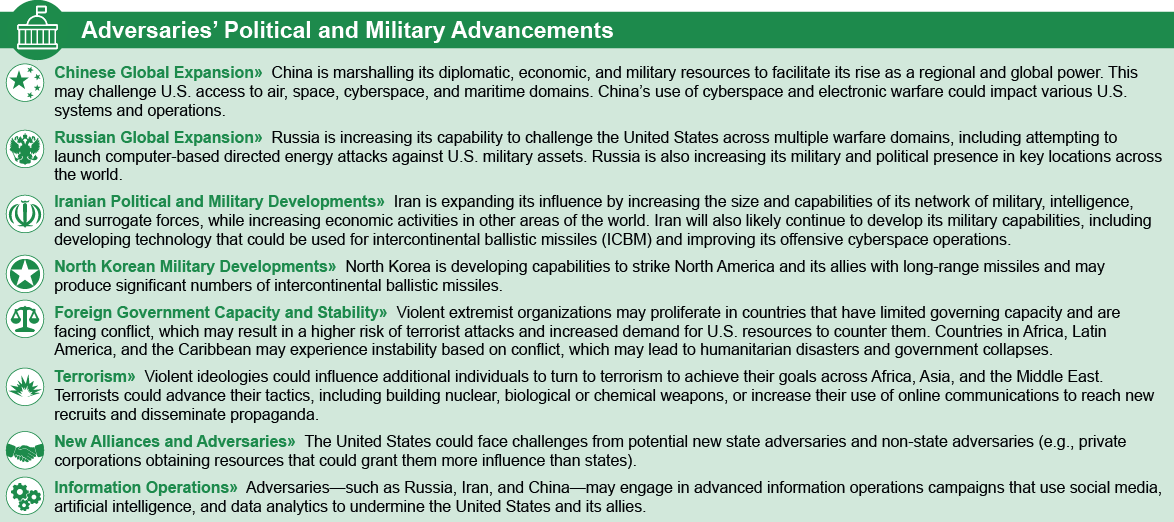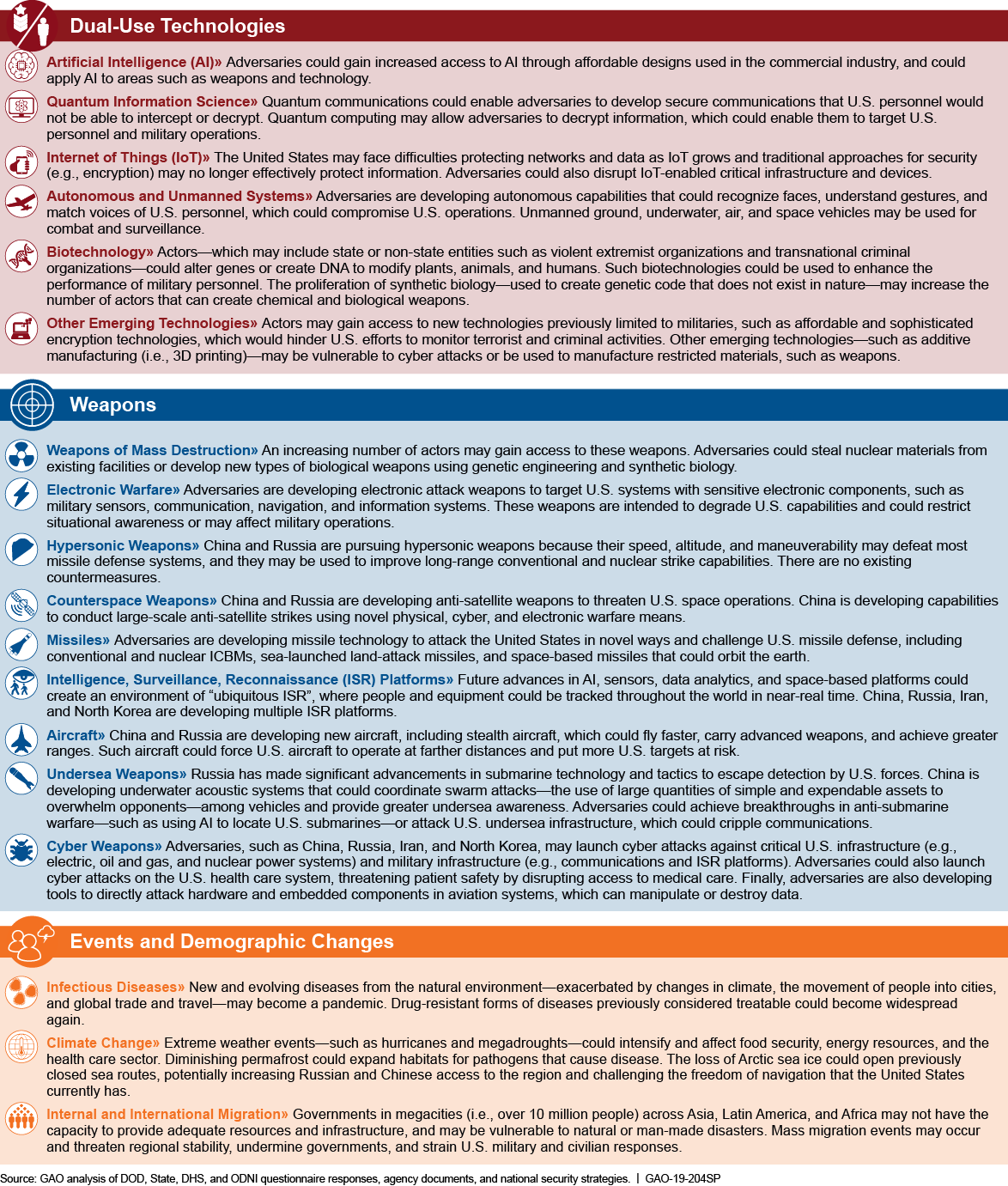National Security: Long-Range Emerging Threats Facing the United States As Identified by Federal Agencies
Fast Facts
Threats to U.S. national security continue to evolve with technological, economic, and social changes.
Federal agencies identified 26 long-term threats within 4 categories:
1) Adversaries' Political and Military Advancements—e.g., China's increasing ability to match the U.S. military's strength.
2) Dual-Use Technologies—e.g., self-driving cars might be developed for private use, but militaries can use them too.
3) Weapons—advances in weapons technology, e.g., cyberweapons.
4) Events and Demographic Changes—e.g., infectious disease outbreaks.
GAO's Four Broad Categories for Long-Range Emerging Threats Identified by Federal Agencies

This is an illustration of GAO's categories for long-range emerging threats identified by federal agencies.
Highlights
What GAO Found
DOD, State, DHS, and ODNI independently identified various threats to the United States or its national security interests. In analyzing more than 210 individual threats identified by organizations across DOD, State, DHS, and ODNI, as well as its review of national security strategies and related documents, and interviews with key agency officials, GAO developed four broad categories for 26 longrange emerging threats that officials identified: Adversaries' Political and Military Advancements, Dual-Use Technologies, Weapons, and Events and Demographic Changes.
Emerging Threats As Identified by DOD, State, DHS, and ODNI


Why GAO Did This Study
The United States faces a complex array of threats to our national security, including our political, economic, military, and social systems. These threats will continue to evolve as new and resurgent adversaries develop politically and militarily, as weapons and technology advance, and as environmental and demographic changes occur. A House committee report accompanying a bill for the National Defense Authorization Act for Fiscal Year 2018 included a provision for GAO to identify emerging threats of high national security consequence. This report focuses on long-range emerging threats--those that may occur in approximately 5 or more years, or those that may occur during an unknown timeframe--as identified by various respondents at the Department of Defense (DOD), Department of State (State), Department of Homeland Security (DHS), and the Office of the Director of National Intelligence (ODNI).
To identify long-range emerging threats, GAO administered a questionnaire to 45 government organizations that assess emerging threats across DOD, State, DHS, and ODNI, and had a 78-percent response rate. GAO conducted a content analysis of the responses to identify specific threats and develop broad threat categories. To supplement the data from the questionnaire, GAO reviewed national security strategies and agency documents provided by DOD, State, DHS, and ODNI, and interviewed key agency officials. This report is a public version of a classified report that GAO issued on September 28, 2018. Information that DOD deemed classified and sensitive has been omitted.
